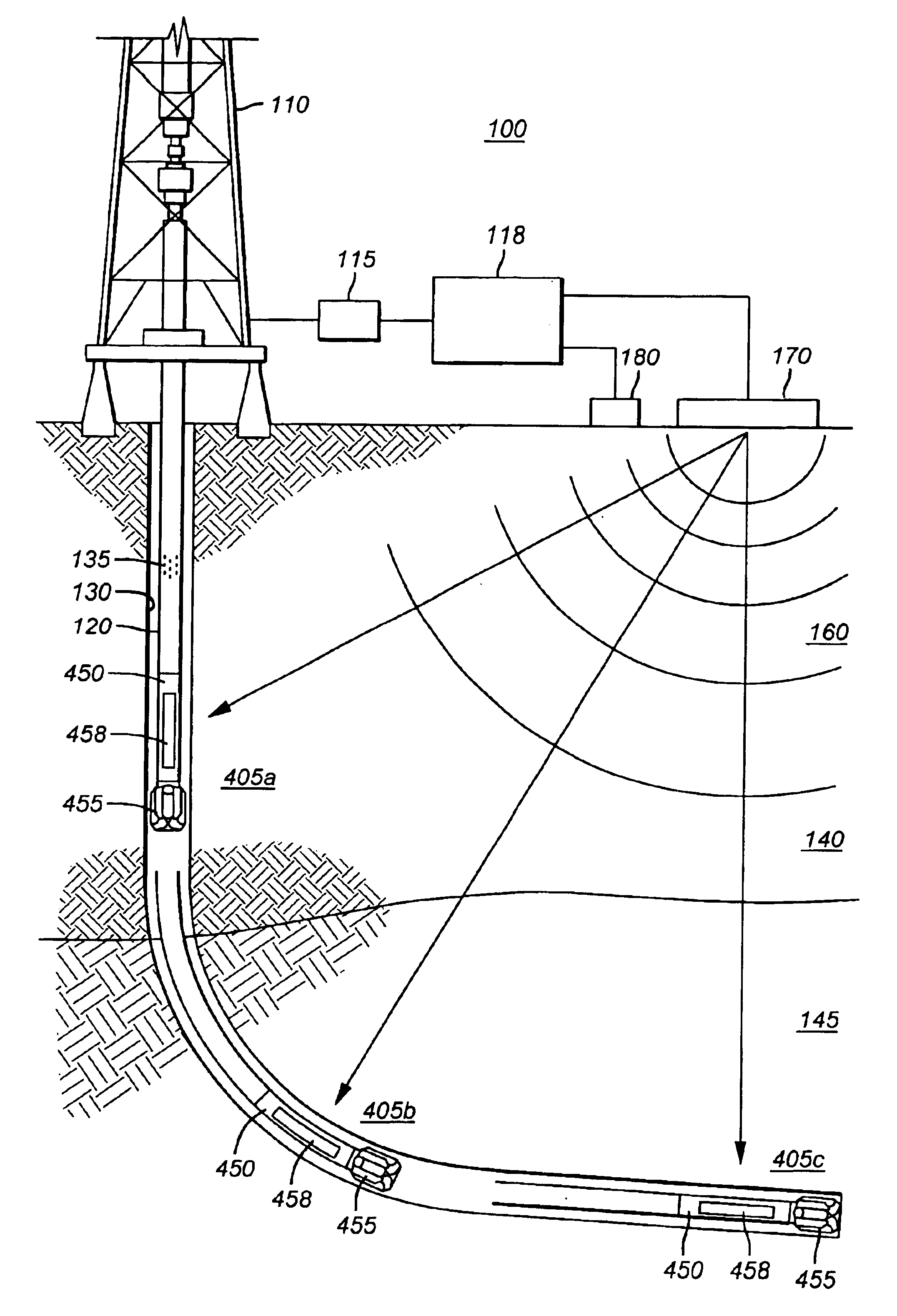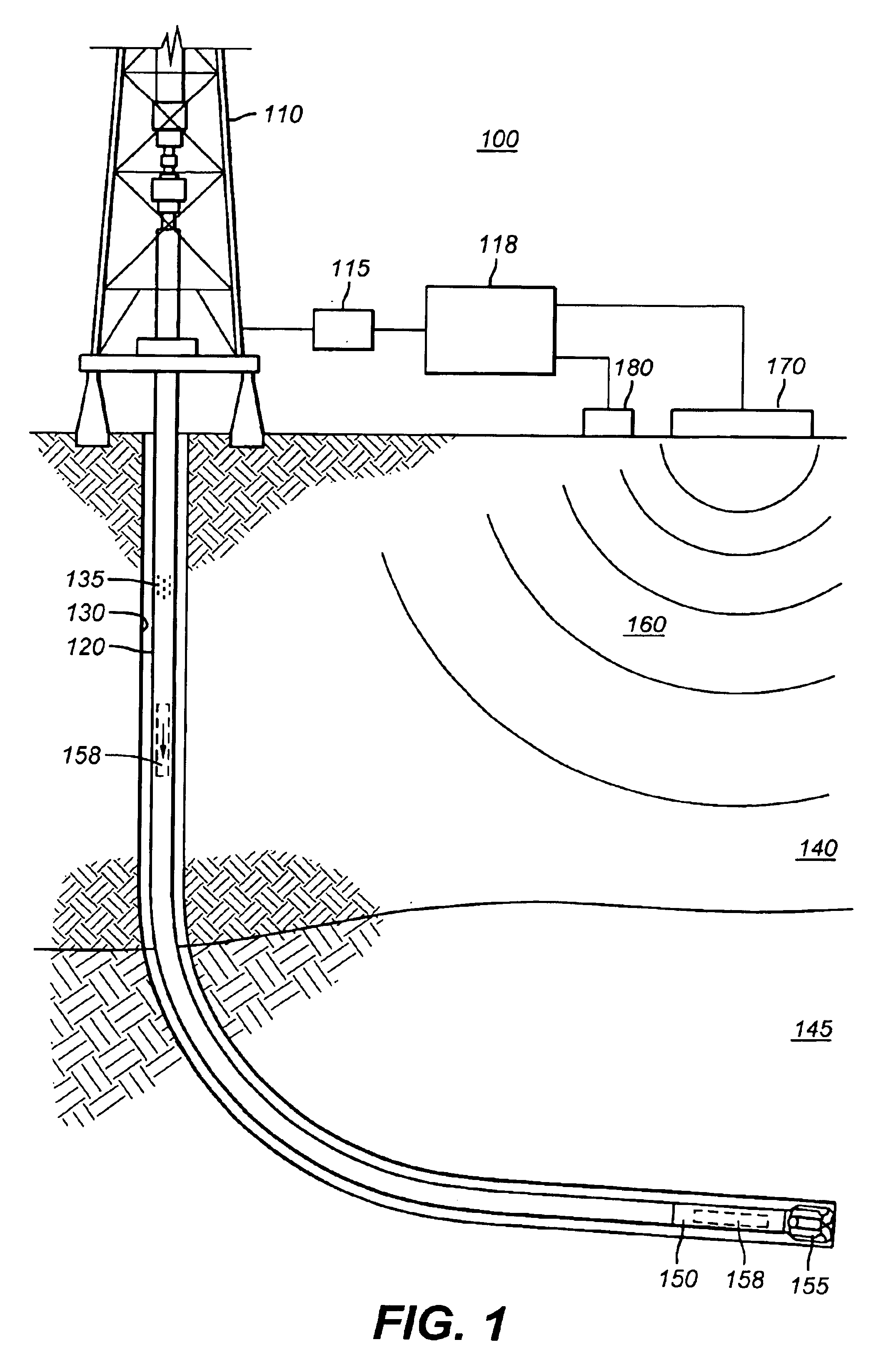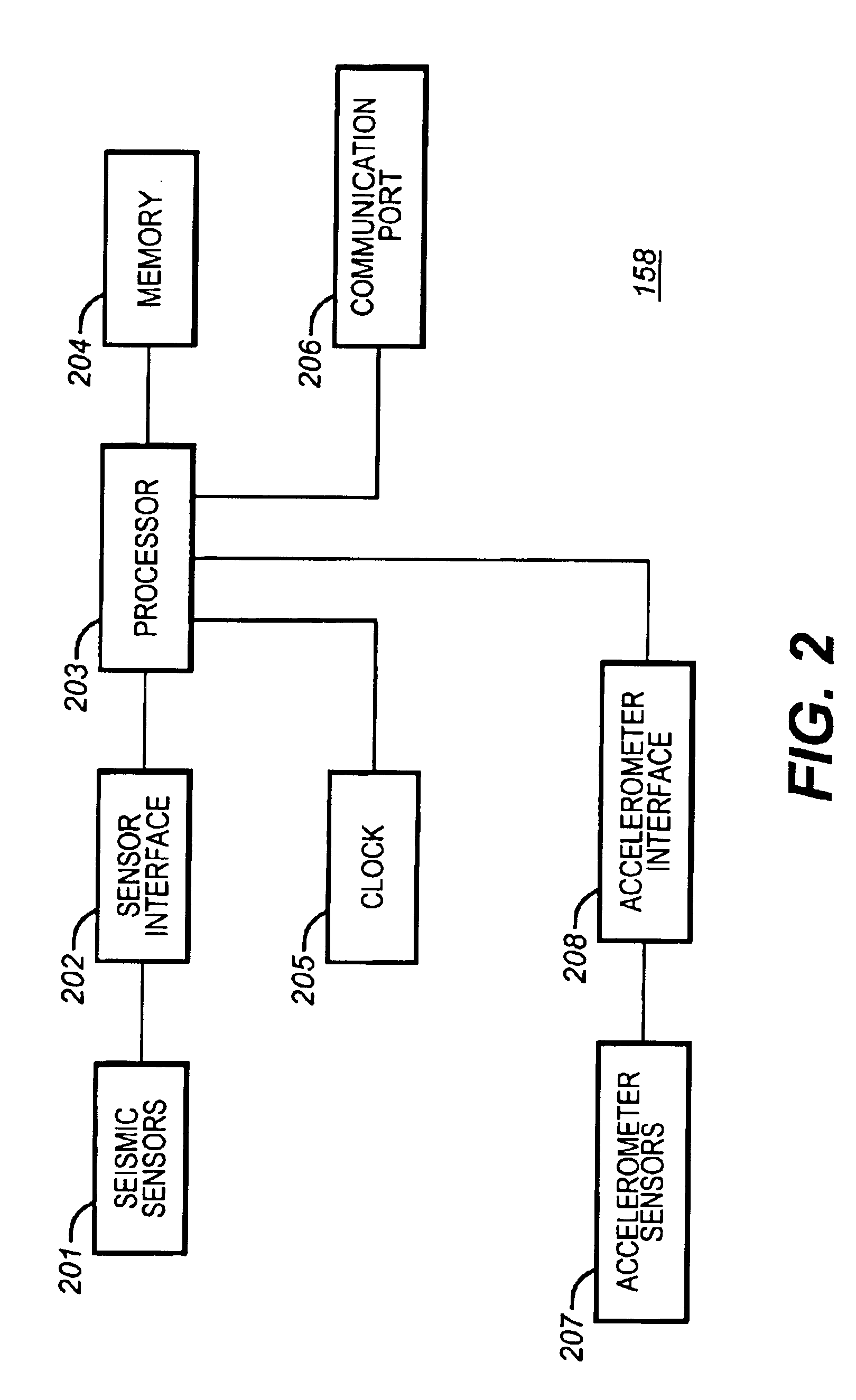Atomic clock for downhole applications
a technology of atomic clocks and downholes, applied in the field of geophysical exploration, can solve the problems of clocks being easily distorted, downhole clocks, and clocks being also susceptible to errors
- Summary
- Abstract
- Description
- Claims
- Application Information
AI Technical Summary
Problems solved by technology
Method used
Image
Examples
Embodiment Construction
In one embodiment, referring to FIG. 1, a system 100 according to the present invention includes a derrick 110 with an attached tubular member, such as drill string 120. A drill bit 155 creates a wellbore 130 through the surrounding formation 140, which may also include formation boundaries corresponding to, for example, an over-pressurized zone 145. A seismic receiver 158, configured here in a sonde configuration, has appropriate seismic sensors and is inserted into the drill string 120. The seismic receiver 158 may fall by gravity to a landing sub 150 near the drill bit 155. Alternatively, the seismic receiver 158 may be deployed using the drilling fluid 135 to effectively pump the receiver 158 to the landing sub 150. Further alternatively, the receiver 158 may be integrated into any MWD or wireline system configuration in a manner well-known in the art.
The seismic receiver 158 receives seismic signals 160 from a seismic source 170, such as a mechanical vibrator, located at the su...
PUM
 Login to View More
Login to View More Abstract
Description
Claims
Application Information
 Login to View More
Login to View More - R&D
- Intellectual Property
- Life Sciences
- Materials
- Tech Scout
- Unparalleled Data Quality
- Higher Quality Content
- 60% Fewer Hallucinations
Browse by: Latest US Patents, China's latest patents, Technical Efficacy Thesaurus, Application Domain, Technology Topic, Popular Technical Reports.
© 2025 PatSnap. All rights reserved.Legal|Privacy policy|Modern Slavery Act Transparency Statement|Sitemap|About US| Contact US: help@patsnap.com



